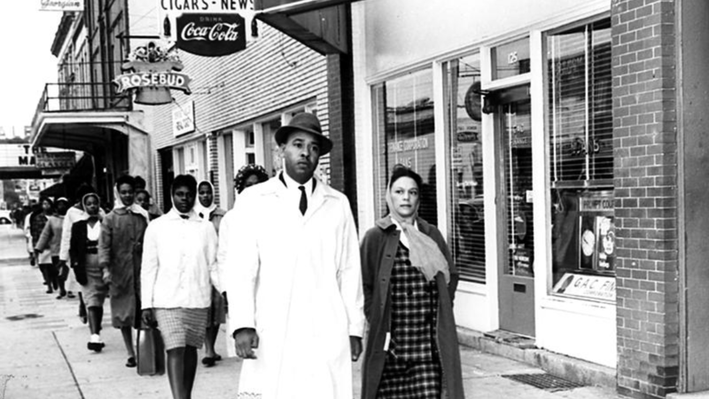When teaching the Civil Rights Movement, I like to start by challenging my students’ preconceived notions of where and when they could find this moment in history. This year, while preparing for this unit, I discovered an often overshadowed story of the Civil Rights Movement, that provides a nuanced look at both the struggles and the strategies that go into civil rights activism.
In November 1961, in Albany, Georgia, a coalition of Black activists and local organizations including the Student Nonviolent Coordinating Committee (SNCC) and the National Association for the Advancement of Colored People (NAACP), initiated the Albany Movement. Their objective was to desegregate the entire city and dismantle the Jim Crow laws long entrenched in the Deep South.
On November 17, the movement began, employing nonviolent protests, including sit-ins, marches, and mass arrests, challenging segregation at its core. Within a month there had been more than 500 arrests and the Albany Movement drew national attention when Dr. Martin Luther King Jr. joined the protests and was subsequently arrested. Dr. King accepted bail while under the impression that the city leadership had agreed to some concessions, only to find out afterward that the city’s white leadership refused to consider any of the movement’s demands. The Albany Movement faced significant resistance, namely from the city’s police chief, Laurie Pritchett, who strategically employed his version of nonviolence (at least when media and cameras were present), thereby limiting media coverage and national outcry.
Dr. King looked at the tepid results from the Albany Movement as a failure, but the activists on the ground did not see it that way. Engagement and activism rose, as did voter registration. By 1963 all segregation statutes were removed from the books. While the immediate demands were not met, the Albany Movement serves as a model for gradual and continual progress in the fight for equality.
Incorporating the Albany Movement into the social studies curriculum allows educators to enrich their students’ understanding of the Civil Rights Movement. Students are engaged by the stories of resilience and courage exemplified by the youth activists in SNCC, while the story underscores the strategic and organizational challenges inherent in effecting social change. Eyes are opened to the amount of work and planning that goes into the fight beyond the protest itself. The Albany Movement intended to take on desegregation on a city-wide basis simultaneously. This led to some initial struggles due to differing tactics and objectives among the participating groups. These struggles highlighted the need for cohesive planning and unified goals and served as a blueprint for larger and more well-known civil rights campaigns in Birmingham and Selma.
For a fantastic video that can be used to introduce this often-overlooked moment in the fight for Civil Rights, check out this video on the Albany Movement in eMediaVA. For more civil rights resources, explore eMediaVA’s African-American history collection. The Civil Rights Movement archive also has a great collection of primary sources related to the Albany Movement, which you can find here.
Evan Liddiard is a humanities teacher at the Lynnhaven School in Richmond and an eMediaVA Ambassador.
